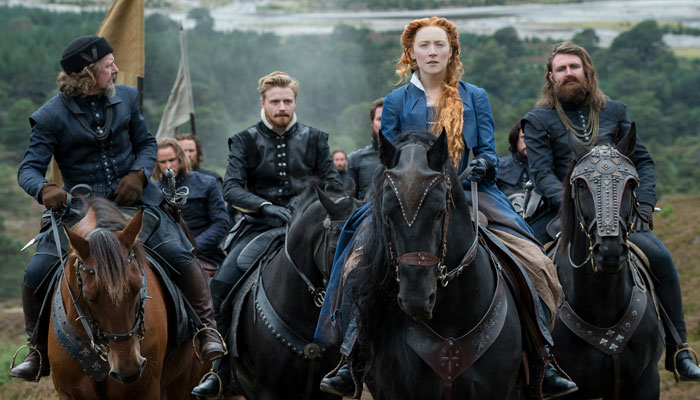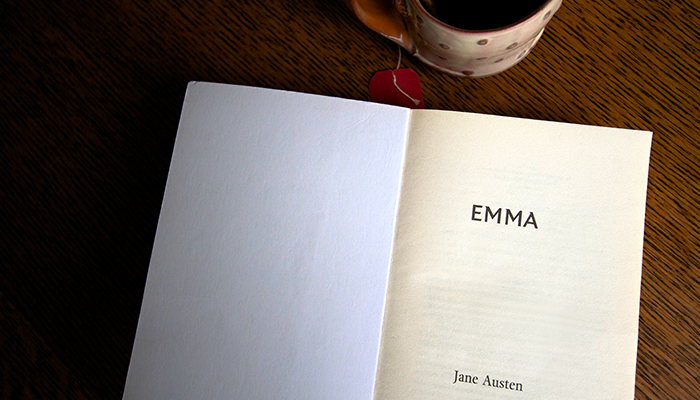What do you picture when you think of vampires? These days the image often conjures up a suave, sexy and supernaturally enhanced version of humanity. Whether it’s the piercing blue eyes of Damon Salvatore from TV hit The Vampire Diaries, the sparkly skin of Twilight’s blood-sucking teens, or even an aristocratic Dracula cloaked in his pointy-collared cape (to say nothing of his Sesame Street Counterpart), you’re probably more likely to imagine vampires as people with a penchant for blood and violence than something distinctly more beastly, monstrous, and inhuman.

Dracula: Voyage of the Demeter seems conscious of this fact, sinking its teeth into this most famous vampire legend in a way that offers a simultaneously fresh and familiar perspective. Most notable is the representation of Dracula himself. Gone is the collared black cape (you’ll have to wait for that), or any resemblance to an ancient aristocratic gentleman from Transylvania. Instead, what we find is a creature far less human and much more animal and demonic. While in the novel, Dracula can take the form of “a great bat, coming and going in great, whirling circles”, the film renders this creature huge, hideous and demonic, almost gargoyle-like. With bat-like ears and giant, bat-like wings, this monstrous creature would send even Batman into a fit of fear (and jealousy).
And yet, despite the swing towards a more monstrous image of the vampire than we are perhaps used to, as well as the introduction of a few new characters and plot elements, the film also manages to deliver an adaptation that feels surprisingly true to the spirit of Bram Stoker’s original novel.
... the film draws on the haunting power of the ghost-ship tradition, fleshing it out into a full-bodied, if gory, viewing experience.
Published in 1897, Bram Stoker’s Dracula was a Gothic sensation, propelling the vampire into popular culture, where it has remained one of the most famous Gothic monsters ever since, influencing the genre across literature, film, gaming, merchandising and more. The tale, presented as a series of diary entries and letters from a cast of human characters who encounter the vampire, follows Dracula from Transylvania to England and thereafter back to Europe, pursued by our human heroes.
He lands at Whitby in the North-East of England under strange circumstances. A sudden storm whips up, accompanied by suffocating fog, and amidst the maelstrom, a derelict ship – the Demeter – crashes ashore, manned only by a corpse lashed to the wheel, clutching a crucifix. No crew survive on board; all that is left is the strange cargo – boxes filled with dirt. We later find out that this is how the vampire is transported across the sea, being unable to cross running water, and the events aboard ship that led to its ruin are recorded in a brief, sparse Captain’s log, found on the body.
This strange occurrence is a tiny fraction of the novel, making up only part of one chapter, and yet the idea of the ghost ship, plagued by the demonic stowaway who, unbeknownst to the crew, sleeps below deck, is a particularly memorable one. The chapter itself leaves much of the horror to the imagination, keeping the vampire himself mostly out of sight, and recording instead only the terrifying effect he has on the crewmen, who gradually disappear over a series of nights while the remaining crew grow increasingly scared and superstitious until there is only the Captain left, lashing himself to the wheel and preparing to meet his doom at the hands of “It! Him!”.
The power in these scenes comes from the audience’s imagination, which fills in the gaps to supply the horror these men must have experienced. The ghost ship, crewed by dead men, was by the time of Stoker’s novel a famous Gothic image, stemming a century earlier from Samuel Taylor Coleridge’s Gothic ballad, The Rime of the Ancient Mariner. We see it at play even in modern times in films like The Pirates of the Caribbean.
And herein lies the success of this latest film adaptation, Dracula: The Voyage of the Demeter. By focusing on the ship’s voyage, rather than the much more wide-ranging exploits of the vampire and his human victims and hunters, the film draws on the haunting power of the ghost-ship tradition, fleshing it out into a full-bodied, if gory, viewing experience. Rather than a brief, if powerful, moment in a longer story, the film holds us there, unable to progress with the traditional story because we – like the crew – are trapped aboard this increasingly horrific voyage. This sense of doom, of fated inevitability, is remarkably effective in enhancing the horror, established from the beginning of the film by its highly Gothic opening scene of the derelict ship crashing ashore amidst the storm. The question we ask throughout the film is not so much “how will they kill the monster?” (we know they won’t), but “who, if anyone, will survive?”
Other new additions to the story also derive from traditional elements of the novel, resulting in a paradoxical sense of freshness and familiarity. The tension between scientific reason and the unexplainable supernatural is coupled with the repeated motif of blood transfusions – a modern Victorian technology – in which the donor, usually the medical man himself (Van Helsing or Dr Seward in the novel, or the film’s new and main character Clemens, portrayed beautifully by Corey Hawkins) drains his own blood to replace that of the vampire’s victim, thus staving off their transformation. It is a reversal of the vampiric act that underscores the battle between science and supernatural, between modern medical man and ancient, demonic beast.
As a horror film, this one won’t have you cowering beneath your bed-covers listening out for the monster in the dark, but its deliciously creepy atmosphere is punctuated by some truly hair-raising moments, and the sense of unavoidable doom makes for tense viewing. For fans of Dracula, or Victorian-era Gothic tales, this fresh adaptation comes highly recommended.
Scare-factor rating: 3.5/5

Dr Kirstin Mills , pictured above, is a senior lecturer in the Macquarie University Faculty of Arts.



